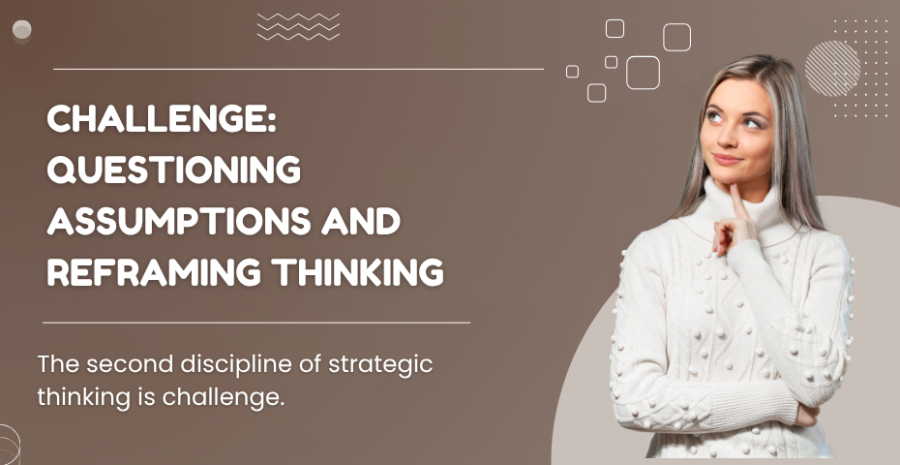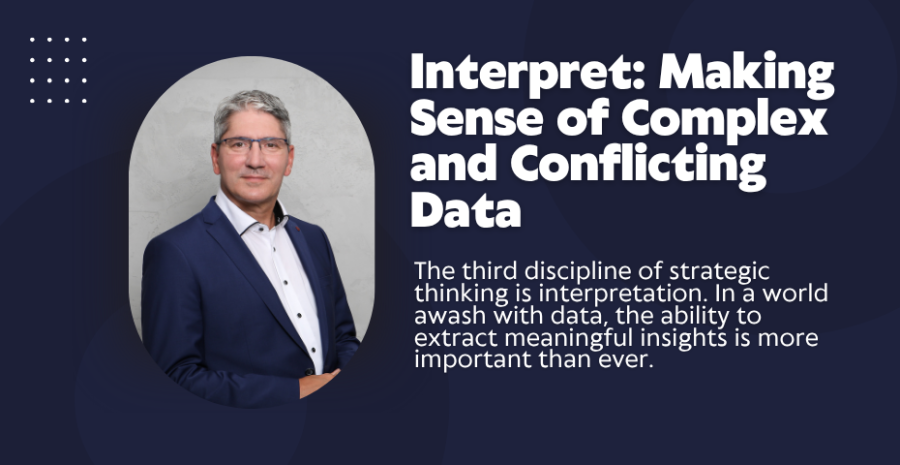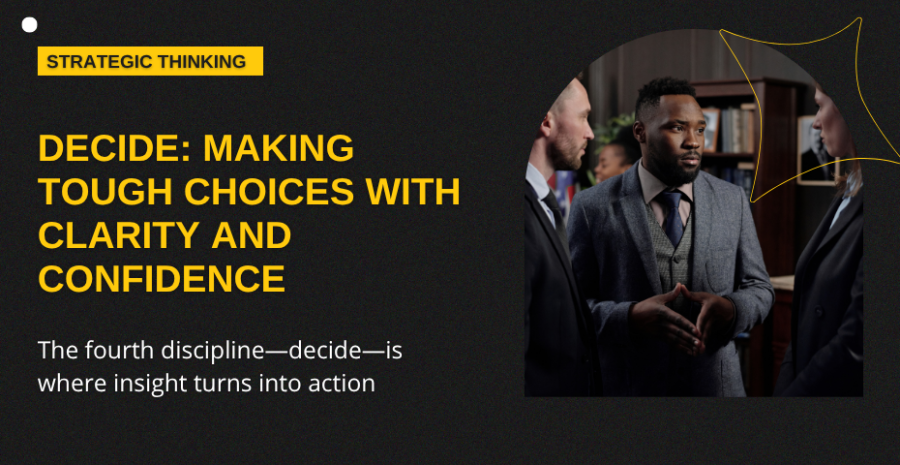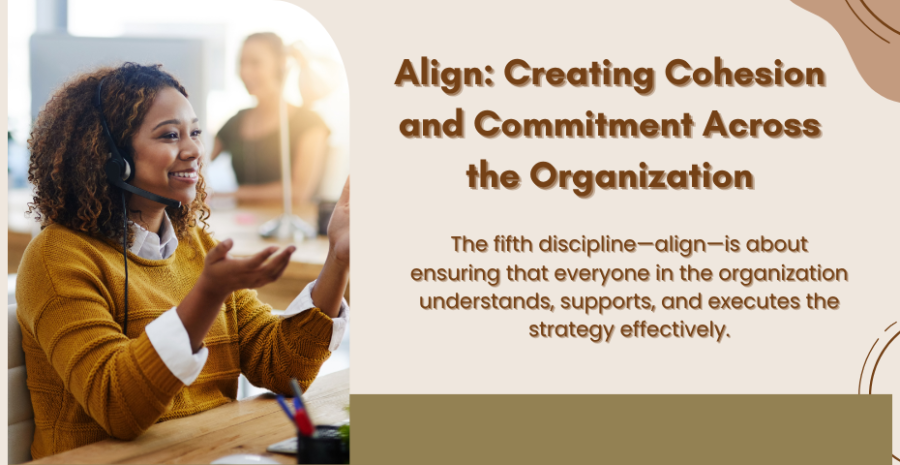Master the Future: The 6 Disciplines of Strategic Thinking Every Leader Must Know
Introduction: Why Strategic Thinking is the Leadership Imperative of the Future.
In a world defined by constant disruption, hyper-competition, and rapid technological evolution, the role of leadership has never been more complex — or more essential. The traditional models of management that emphasized predictability and control are giving way to a new leadership paradigm—one that requires foresight, adaptability, and an unwavering commitment to shaping what lies ahead.
Strategic thinking is no longer a luxury for senior executives or boardroom strategists; it’s a non-negotiable skill for any leader serious about navigating their organization through uncertainty and opportunity alike.
Leaders today are not just expected to react to the present but to anticipate the future. They must identify emerging trends, assess threats before they become crises, and uncover opportunities where others see obstacles.
The organizations that will thrive in the coming decades are those led by individuals who can think beyond the immediate—who can craft visions, align teams, and execute bold moves that create long-term value. Strategic thinking is the art and science of making decisions that secure tomorrow's success today.
Yet many leaders struggle with strategic thinking because they confuse it with planning. While planning focuses on setting objectives and allocating resources, strategic thinking is about insight, pattern recognition, and disciplined reflection. It challenges assumptions, explores alternatives, and generates fresh perspectives.
It’s as much about asking the right questions as it is about finding the right answers. Strategic thinking doesn’t just live in spreadsheets and business plans—it lives in dialogue, analysis, and imagination.
To master strategic thinking, leaders need a robust framework. One-off tactics and ad-hoc brainstorming won’t cut it. What’s required is a systematic approach—a set of disciplines that can be practiced, refined, and integrated into daily leadership.
These six disciplines of strategic thinking are not abstract theories; they are practical mindsets and behaviors that can be developed over time. When consistently applied, they serve as a powerful roadmap for leading with clarity and conviction into an uncertain future.
The beauty of these disciplines lies in their synergy. Each one supports and strengthens the others. Together, they form a holistic model that helps leaders scan their environments, shape compelling visions, align their teams, make tough choices, and execute effectively. They build both the intellectual muscle and emotional intelligence needed to navigate the pressures of strategic leadership.
Whether you're a founder building from the ground up, a C-suite executive managing global operations, or an emerging leader driving innovation, these six disciplines are your competitive edge. They will help you move beyond reactive management into proactive, future-focused leadership. They are the bridge between insight and action, vision and execution, idea and impact.
Now is the time to rethink how you lead. The pace of change isn’t slowing down. The risks are rising. The winners of tomorrow are being shaped today.
The six disciplines of strategic thinking are your tools to not just survive but to lead boldly.
Let’s explore what they are—and how you can begin mastering them right now.
1. Anticipate: Scanning the Horizon for What’s Next
Strategic thinking begins with anticipation. In today’s volatile and fast-moving environment, the ability to see around corners is a critical leadership advantage.
Leaders who anticipate don’t wait for change to come—they track early signals, identify trends, and map out potential disruptions before they fully materialize. This discipline requires more than just reading industry news or attending conferences.
It demands a deliberate effort to gather intelligence from diverse sources: market data, competitor activity, regulatory shifts, customer behaviors, and emerging technologies. Leaders must cultivate curiosity and a habit of asking, “What if?” They must develop scenario thinking, war-gaming, and future-casting skills that allow them to visualize multiple outcomes.
Anticipation also involves deep listening—especially to those on the front lines and in your customer base. Often, the first signs of change come not from strategic planning sessions but from feedback loops and small anomalies.
The key is to connect dots before others even see them. By anticipating rather than reacting, leaders shift from a defensive stance to a proactive one.
They make investments, form alliances, and pivot strategies ahead of the curve. They reduce surprises and increase resilience.
In a world where advantage is often short-lived, those who see change first—and act on it—are the ones who shape the future instead of being shaped by it.
2. Challenge: Questioning Assumptions and Reframing Thinking
The second discipline of strategic thinking is challenge. This is the ability to question the status quo, confront groupthink, and push beyond conventional wisdom. Every organization, no matter how innovative, develops blind spots.
These are often based on outdated assumptions, cultural norms, or past successes that no longer apply. Strategic leaders embrace challenge as a tool for continuous improvement and reinvention. They don’t shy away from tough questions—they seek them out.
They foster cultures where dissent is not only tolerated but welcomed. Where others see criticism as a threat, strategic thinkers view it as a catalyst for growth. This discipline requires intellectual humility and emotional courage.
It means being willing to say, “Maybe we’re wrong,” and explore alternatives without ego. Challenging assumptions also means breaking through cognitive biases—confirmation bias, anchoring, status quo bias—that distort decision-making.
Strategic leaders use structured thinking tools like red teaming, devil’s advocacy, and design thinking to examine issues from new angles. They invite diverse perspectives and test hypotheses rigorously. By challenging what others take for granted, they unlock innovation, discover hidden opportunities, and avoid costly errors.
In a landscape where change is constant, yesterday’s logic can quickly become today’s liability. The discipline of challenge ensures that strategic thinking remains fresh, adaptive, and deeply rooted in reality.
3. Interpret: Making Sense of Complex and Conflicting Data
The third discipline of strategic thinking is interpretation. In a world awash with data, the ability to extract meaningful insights is more important than ever.
Strategic leaders don’t just gather information—they synthesize it. They translate complexity into clarity and conflicting signals into actionable meaning.
This requires pattern recognition, systems thinking, and contextual intelligence. It’s not enough to know what the data says; you must understand what it means in your unique strategic environment.
Leaders who interpret well combine quantitative rigor with qualitative depth.
They cross-reference numbers with narratives, trends with truths, and evidence with experience. They resist the temptation to oversimplify or overreact. Instead, they zoom out to see the big picture and zoom in to understand the nuances.
Interpretation also involves managing ambiguity. Strategic leaders know that not all decisions come with perfect information. They learn to make the best possible calls based on partial data, evolving realities, and intuitive judgment.
They use dashboards, KPIs, and analytics, but they don’t become enslaved to them. Interpretation is where intelligence meets wisdom.
It’s where facts become insights—and insights become foresight. In an age where speed matters, those who can make sense of complexity faster and more accurately gain a decisive edge.
4. Decide: Making Tough Choices with Clarity and Confidence
Strategic thinking ultimately leads to decision-making. The fourth discipline—decide—is where insight turns into action. But unlike routine decisions, strategic choices involve high stakes, long timelines, and uncertain outcomes.
They often require trade-offs, resource allocation, and a willingness to commit without full consensus. Strategic leaders excel at making decisions that align with long-term goals, not just short-term pressures. They prioritize what matters most and avoid analysis paralysis.
They create structured decision-making processes that involve the right data, voices, and criteria. Importantly, they make decisions at the right altitude—focusing on the choices that truly shape direction, capability, and differentiation.
The discipline of decide requires courage as much as clarity. Every strategic decision has opportunity costs. Saying yes to one path means saying no to others. Strategic leaders embrace this reality. They’re willing to be misunderstood in the short term to achieve long-term results.
They don’t seek popularity—they seek impact. And once a decision is made, they communicate it with conviction and consistency. They align teams around it, resource it properly, and stay committed long enough to evaluate results.
In a noisy world full of competing priorities, the discipline of decisive leadership is what separates great strategies from great intentions.
5. Align: Creating Cohesion and Commitment Across the Organization
A brilliant strategy without alignment is just an idea. The fifth discipline—align—is about ensuring that everyone in the organization understands, supports, and executes the strategy effectively. Strategic alignment connects vision to execution by creating shared understanding, priorities, and accountability.
Leaders who master this discipline invest heavily in communication, culture, and collaboration. They translate high-level strategy into clear objectives for every level of the business. They ensure that structures, incentives, and behaviors are in sync.
Strategic alignment is not about rigid conformity; it’s about coordinated focus. It allows teams to move fast in the same direction without constant oversight. Alignment also requires emotional intelligence. People don’t commit to strategy just because it makes sense on paper—they commit because they feel involved, inspired, and valued.
Strategic leaders use storytelling, dialogue, and strategic conversations to build belief. They listen actively and adjust their approach based on feedback. They align not just systems but hearts and minds. When alignment is strong, strategy becomes everyone’s job—not just the C-suite’s. Silos break down.
Trust grows. Momentum builds. The discipline of align turns strategy from a static plan into a dynamic movement.
6. Learn: Embedding Agility Through Continuous Strategic Learning
The final discipline of strategic thinking is learn. In an unpredictable world, learning is the ultimate competitive advantage. Strategic leaders treat every decision, success, and failure as a source of insight. They build feedback loops, conduct after-action reviews, and institutionalize lessons learned.
This isn’t about waiting until year-end to reflect—it’s about creating a culture where real-time learning is embedded in the way work gets done. Learning ensures that strategy evolves with reality. It helps organizations adapt faster than the environment changes.
Strategic learners are curious, humble, and experimental. They test assumptions, measure outcomes, and iterate quickly. They recognize that no strategy survives first contact with reality unchanged. The discipline of learn enables leaders to fail forward—to turn setbacks into stepping stones.
It also strengthens strategic thinking over time. Each cycle of learning improves the quality of anticipation, challenge, interpretation, decision, and alignment. Strategic learning closes the loop and opens new possibilities.
It creates a resilient organization—one that doesn’t just respond to change but grows stronger because of it. Leaders who lead with learning inspire cultures of innovation, accountability, and continuous improvement.
Last Word: Master the Future by Leading With Strategic Discipline
The future doesn’t belong to the fastest, the biggest, or even the most well-funded—it belongs to those who think strategically and act with purpose. Mastering the six disciplines of strategic thinking isn’t just about boosting business performance.
It’s about becoming the kind of leader the future demands: clear-eyed, forward-focused, and relentlessly intentional. These disciplines—anticipate, challenge, interpret, decide, align, and learn—form the bedrock of transformative leadership. They are the compass and the engine for navigating complexity, uncertainty, and opportunity.
Strategic thinking is not a solo sport. It’s a collective, creative, and courageous effort that spans every level of an organization. When leaders commit to practicing these six disciplines daily, they inspire teams to think more boldly, act more decisively, and innovate more freely.
They build organizations that don’t just respond to change but shape it. They turn volatility into vision. They build cultures where everyone contributes to strategy, not just those in corner offices. And they create legacy—not through luck or momentum, but through mindset and mastery.
The journey to strategic leadership begins not with a strategy retreat or a new deck, but with a decision to lead differently. To slow down and think deeply. To question more and assume less. To choose long-term value over short-term noise.
The six disciplines aren’t complicated—but they are challenging. They demand self-awareness, discipline, and a willingness to evolve. But for those who embrace them, the rewards are immense: clarity in chaos, power in complexity, and direction in disruption.
As a leader, your ability to think strategically is your most valuable asset. It’s what enables you to not only survive change but to thrive because of it. It’s what turns a business into a movement, a mission into momentum, and a leader into a legacy-maker.
The future will belong to those who are ready for it—not just with plans, but with perspective.
Now is your time to master the future. Practice the six disciplines. Live them. Lead them. And watch how the world responds when you think—and lead—strategically.
…………………………………………………………………………………………………………………………………………………………………………….
About: Andries vanTonder
Over 46 years selfemployed
He is a Serial Entrepreneur, an Enthusiastic supporter of Blockchain Technology and a Cryptocurrency Investor
Find me: Markethive Profile Page | My Twitter Account | My Instagram Acount | and my Facebook Profile.
Markethive News
.png)



.png)




.png)
